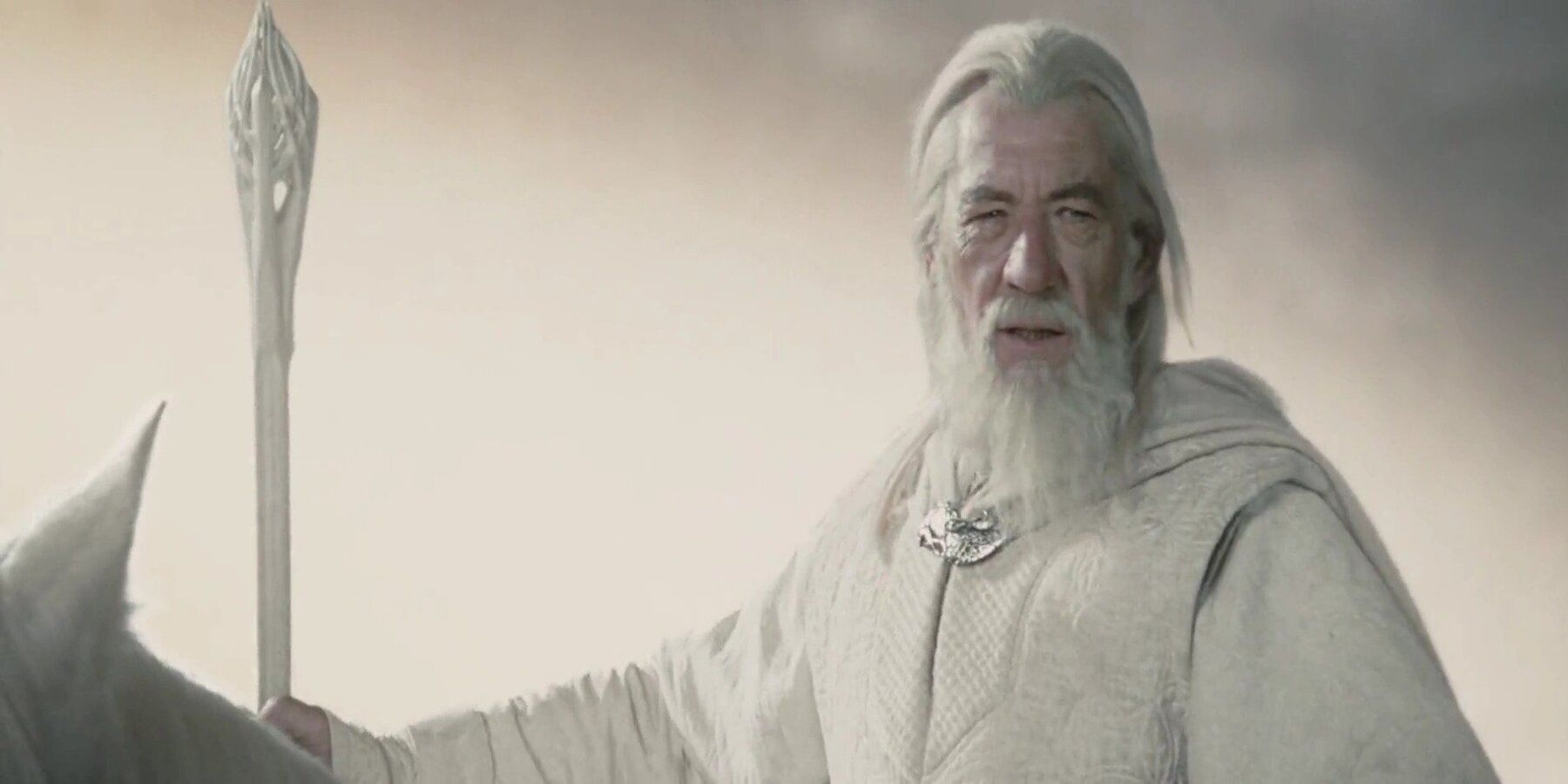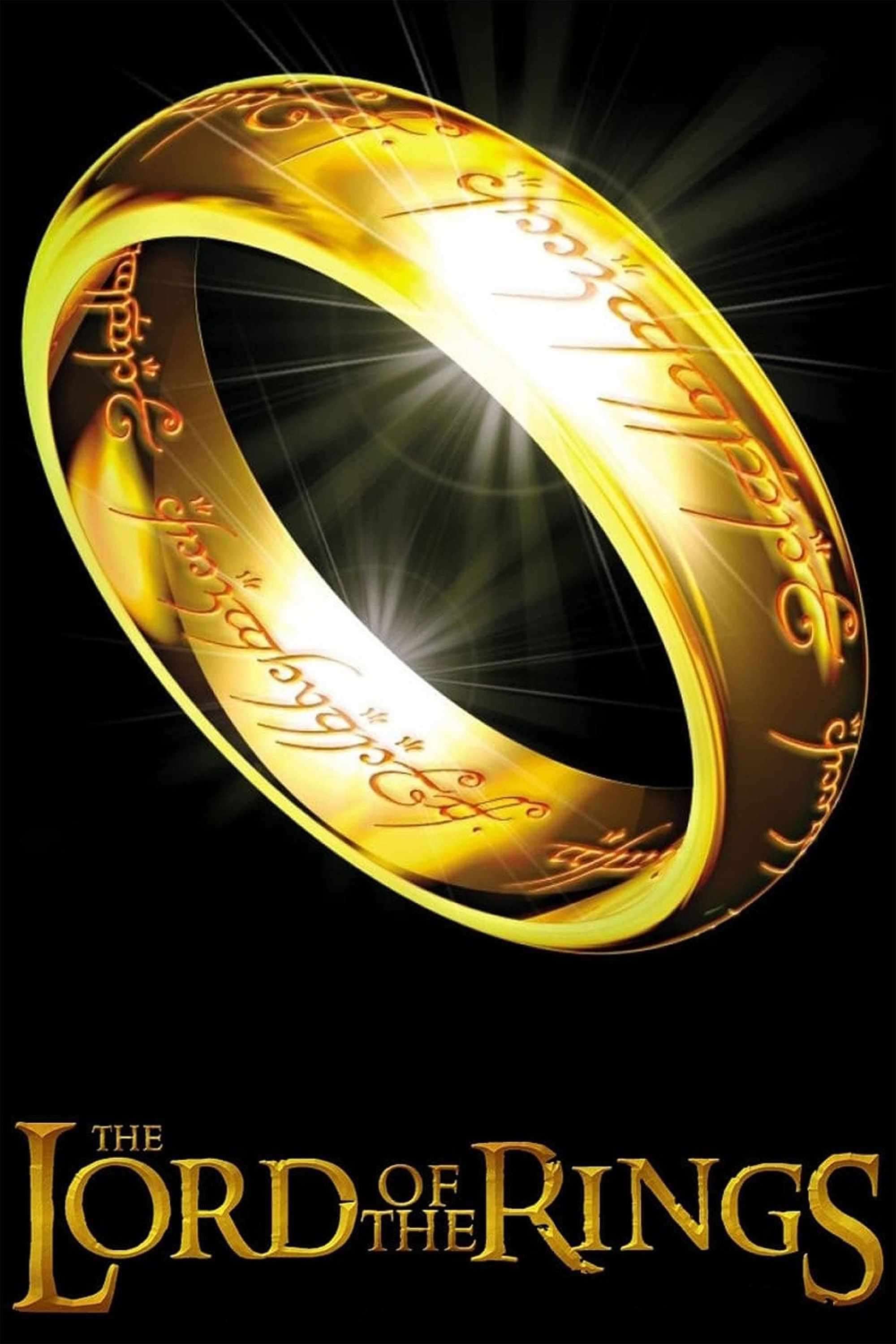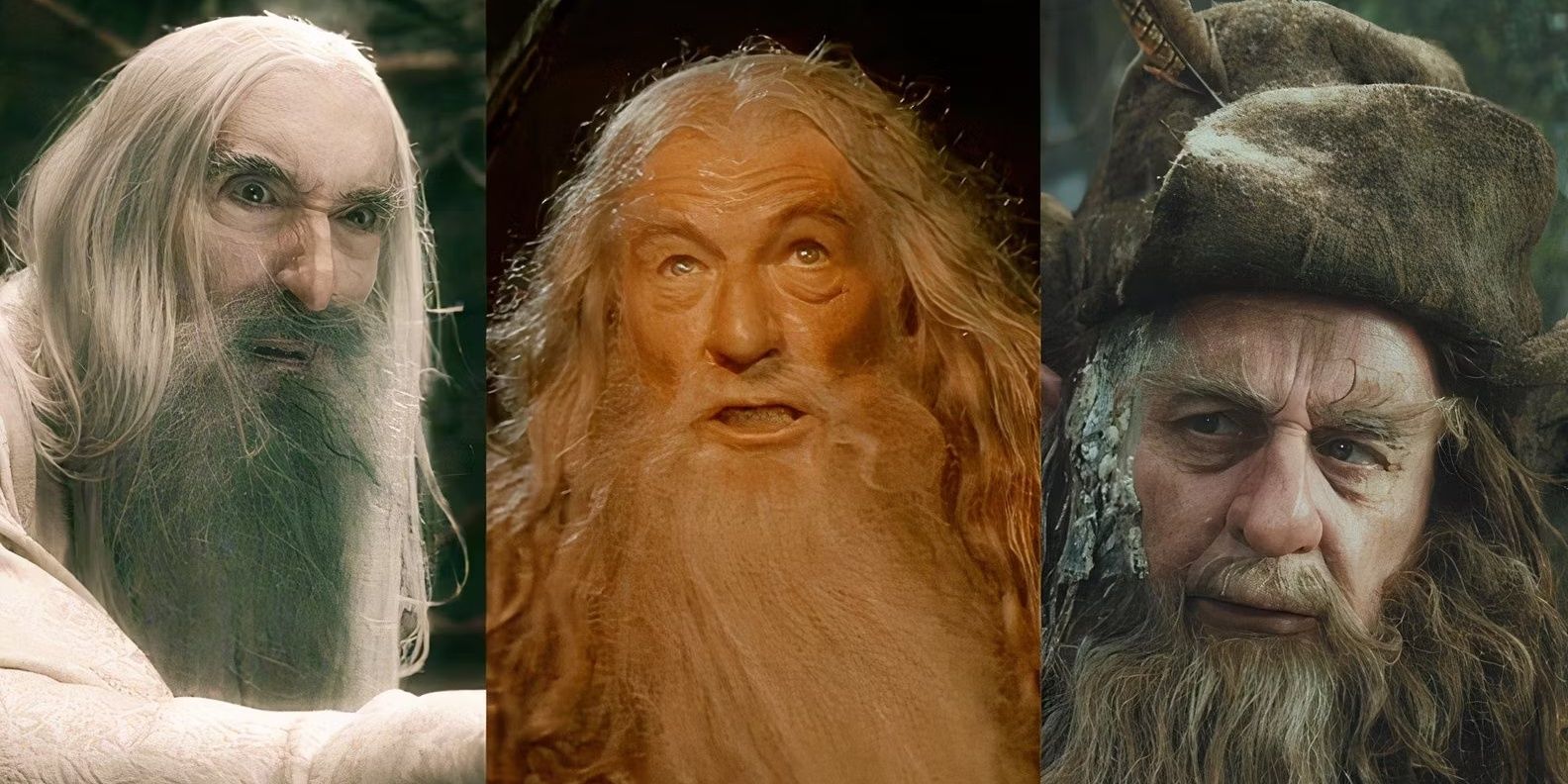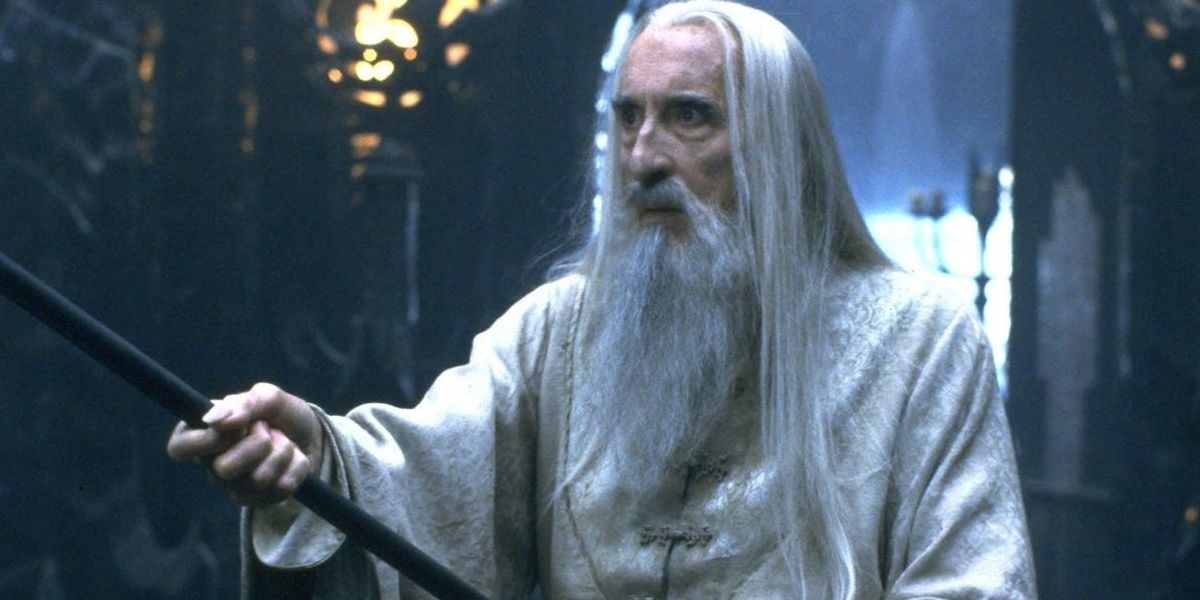Quick Links
The wizards of Middle-Earth are easily among the most iconic and fascinating characters in The Lord of the Rings and its mythos. Their roles are deliberately unclear, left shrouded in mystery and unknowable power, but they still play a massive role in the events of the story. Despite their importance, however, the mysterious nature of these wizards can make it quite difficult to discern how their magical powers actually work.
In general, the magic of The Lord of the Rings operates on what is referred to as a “soft magic system.” This means that the rules of magic within Middle-Earth are never clearly defined, and instead lean into the mystical elements of various powers. The wizards' magical abilities are purposely left open-ended in order to inspire the audience’s imagination, and there are no hard and fast rules that pertain to what sort of spells they do or don't know. Still, the original text provides quite a few clues as to what power-sets the wizards actually possess, and studying these feats can give an interesting insight into what they're actually capable of.

LOTR: Who Is The Strongest Wizard?
With a few different wizards in The Lord Of The Rings it can be hard to determine which one is truly the most powerful around
Where Do the Wizards Come From?
Before diving into each individual wizard and discussing their powers, it is important to understand where these characters come from. In the world of The Lord of the Rings, unlike other fantasy stories, magic is not something that can be learned. Instead, "magic" is only reserved for the most powerful beings in Tolkien's universe. As told in The Silmarillion and The Book of Lost Tales, the wizards are originally Maiar: angelic beings of the same order as Saruon and the Balrog of Moria. In total there are five wizards, each assigned a color that designates their role in the world: Saruman the White, Gandalf the Grey, Radagast the Brown, and Alatar and Pallando the Blue. Together, these five wizards are referred to as “the Istari.”
Because they are Maiar, the Istari were present at the very beginning of the world’s creation. When the Valar (the pantheon of god-like beings in Tolkien’s mythology) began shaping the earth, the Istari were pupils of their teachings. For thousands of years, the Istari served their different Valar masters, learning the skills they would eventually take to Middle-Earth.
At the end of the Second Age (roughly three thousand years before The Lord of the Rings), the Valar began to fear that Sauron might return and wreak havoc on Middle-Earth. They elected to send five of their mightiest Maiar as emissaries for the people of Middle-Earth to follow. This company would become the Istari, and in the earliest years of the Third Age, they arrived in the Grey Havens and began their work in the war against Sauron.
Gandalf's Powers
With an understanding of the Istari’s origins now established, the individual powers of each wizard can be better discussed, starting with the greatest and most famous among their number: Gandalf. As a main character in both The Lord of the Rings and The Hobbit, Gandalf the Grey is arguably the most iconic figure in the entirety of Tolkien’s mythology. While he tends to keep his magical powers relatively hidden, audiences have gotten some incredible glimpses into the extent of the strength that Gandalf possesses.
In both the original novel and the 2001 film, The Fellowship of the Ring contains some of Gandalf’s most unforgettable wizarding feats. He’s seen fending off Ringwraiths with magical lightning, summoning his own luminosity, and, of course, battling the mythical Balrog. Across the board, however, Gandalf’s magic seems to maintain one particular focus: fire. Whether he’s conjuring blazes to ward off hungry Wargs or going toe-to-toe with the Balrog’s flaming whip, it is made quite clear that Gandalf seems to have an affinity for and deep understanding of fire and its magic. This is likely enhanced by the fact that he is the bearer of Narya, the Elven ring of fire.
As fans will assuredly remember, however, Gandalf does not stay “the Grey” for the entirety of the Lord of the Rings. After sacrificing his life to defeat the Balrog, Gandalf’s spirit is returned to Middle-Earth in a new body: Gandalf the White. Not only is this version of Gandalf far stronger, but it is implied that his magical expertise has moved from fire to light. On multiple occasions, Gandalf the White is seen brandishing beams of bright light which he uses to blind foes like the Nazgûl in the Battle of Pelennor Fields. Additionally, as the white wizard, Gandalf embodies a position of far greater leadership, inspiring the peoples of Middle-Earth and leading the charge against Sauron and his dark forces.
Saruman's Powers
Before he succumbed to the evil influence of Sauron, Saruman the White was the proud leader of the Istari. As the white wizard, his role was intended to be one of leadership, but his own ambitions soon got the best of him. Saruman gave into his desires for power, and he would eventually betray the free peoples of Middle-Earth and ally himself with Mordor.
More than any particular spell or element, the primary power of Saruman is implied to be in his voice. In The Two Towers novel, Saruman's voice is viewed as a powerful weapon of manipulation, capable of ensnaring the listener and convincing them of even the most bold-faced of lies. In the chapter aptly titled "The Voice of Saruman," Tolkien describes the wizard's magic as such:
"Suddenly another voice spoke, low and melodious, its very sound an enchantment. Those who listened unwarily to that voice could seldom report the words that they heard; and if they did, they wondered, for little power remained in them."
Aside from his cunning manipulation, Saruman's powers also lie in his vast wealth of knowledge. Unlike Gandalf or Radagast, Saruman spent his time in Middle-Earth largely ignoring the day-to-day lives of its inhabitants, instead choosing to focus on acquiring lore. Because of this, Saruman's knowledge is quite deep indeed, and it's not a stretch to imagine that he is probably aware of powers and spells far beyond the likes of his peers. Ironically, however, it is this myopic outlook that proves to be the white wizard's downfall. Saruman's pride and ambition overrule his great knowledge, and it is his dismissal of the Ents as a threat that makes him so vulnerable to their attack in The Two Towers.
Radagast and the Blue Wizards
When it comes to the last three wizards of the Istari, very little is unfortunately known about what particular powers they might possess. None of these characters received much explanation from Tolkien during his life, but it is this mystery that makes them the focus of a great deal of fan theories and fictions.
Radagast the Brown will probably be familiar to fans for his lovable portrayal by actor Sylvester McCoy in the Hobbit films. While his inclusion in those films makes use of the scant lore surrounding the character, it is by no means a definitive or necessarily faithful take on the character. In the original text, Radagast is said to be a friend to birds and beasts, and spends the majority of his time in Middle-Earth relatively unconcerned with the doings of Elves and Men. With his minimal role in the story, it's difficult to gauge what Radagast is actually capable of, but considering that he is respected by Gandalf and hated by Saruman, it's safe to assume he's not someone to be trifled with.
While the information on Radagast is quite small, the amount that fans know about the Blue Wizards is basically non-existent. Both of these characters never made an appearance in any of Tolkien's canonical writings, and nothing is known about them aside from their names and their roles. The Blue Wizards were sent into the eastern land of Rhûn, where their adventures are completely unknown. However, in his later writings, Tolkien shared that without the work of the Blue Wizards, the east would have completely fallen to Sauron. Clearly, Alatar and Pallando are just as capable as their peers, and fans will continue to hold out hope that they'll see these two adapted sometime in the future.

The Lord of the Rings
The Lord of the Rings is one of the most iconic names in entertainment. The franchise started with novels from J. R. R. Tolkien before being adapted onto the big screen by Peter Jackson in one of the most critically-acclaimed film trilogies of all time. There have also been numerous The Lord of the Rings video games of varying quality.




-1.jpg)

